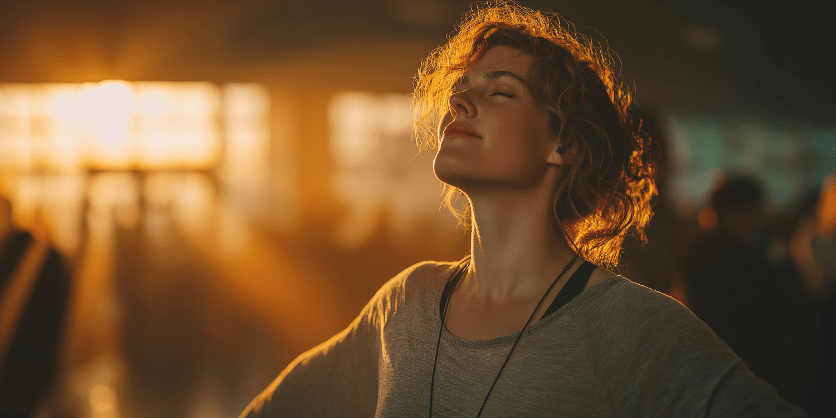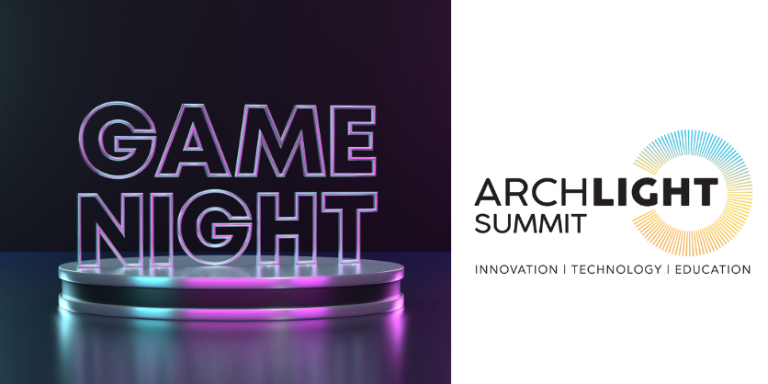The Science Behind How Lighting Impacts Human Health, Wellness & Circadian Rhythm

We meticulously plan diets, exercise routines, and sleep schedules, all in the pursuit of better health — but what if one of the most powerful tools for influencing our well-being has been hiding in plain sight?
According to experts from the Light and Health Research Center (LHRC) at the Icahn School of Medicine at Mount Sinai, the light we live in has a profound and measurable impact on everything from our mood and alertness to our sleep quality and long-term health.
The science behind human-centric and circadian-effective lighting was revealed in a detailed discussion led by Patrick Laidlaw of WAC Group, with LHRC’s Director Dr. Mariana Figueiro and Program Director Jennifer Brons. This isn’t “snake oil,” they assert, but a field grounded in decades of research, offering practical solutions that can transform our built environments — from homes and offices to healthcare settings.
Beyond Vision: Light’s Invisible Influence
For most of history, we’ve thought of lighting in one dimension: visibility. Light affects our visual system, allowing us to see and perceive our environment. But light has another role; it also impacts a powerful “non-visual” system that governs our internal biological clock, known as the circadian system.
“By definition, every type of lighting is human-centric because it enables us to see in our environment, affects our perceptual system, and influences how we perceive and feel in a space,” the experts explain. “This connection even taps into our biophilia—our innate desire to be close to nature.”
The “non-visual” effects of light are where the science becomes fascinating. In our retinas, we have photoreceptors dedicated to absorb photons not just to sight, but to synchronize our brain’s master clock to the local time on earth. In addition, light acts as a powerful stimulant with a direct, acute effect on alertness, much like a cup of coffee. The right kind of light exposure can make you more alert at any time of day. However, for synchronizing your 24-hour biological clock, the timing of that light is crucial.
The foundation for this science was established decades ago. For example, a groundbreaking 1980 study by researcher Dr. Al Lewy revealed that light at night suppresses the production of melatonin, the hormone that tells our body it is nighttime and prepares it for sleep in diurnal species (e.g., humans) and for activity in nocturnal species (e.g., mice). Other groundbreaking studies by Dr. Russell Foster and his team at Imperial College in the 1990s led to the discovery of a new class of photoreceptor by Dr. Berson and team at Brown University in the early 2000s. Today we know that this new photoreceptor, the intrinsically photosensitive retinal ganglion cell (ipRGC), is directly connected to our biological clock. The LHRC’s research focuses on understanding how the retina combines signals from all classical photoreceptors (rods and cones) and the ipRGCs to regulate the biological clock.
For a healthy circadian system, we need to be regularly exposed to bright days and dark nights. In today’s world, many people live in a “muted” light environment in which their days aren’t bright enough, and their nights aren’t dark enough. This lack of a robust light-dark exposure can confuse our biological clocks and contribute to issues like difficulty falling asleep and staying asleep at night, morning grogginess, and even long-term health problems such as diabetes, obesity, heart disease, and an increased risk for dementia.
The Trifecta of Healthy Living
The solution is simple. The circadian system is always looking for two things: contrast and regularity. This translates into a powerful, actionable framework we call the “trifecta” of healthy lighting:
• Bright Days – Expose yourself to high levels of light, especially in the morning and throughout the day.
• Dim Evenings – Two hours before bedtime, step down your light levels.
• Dark Nights – Ensure your sleeping environment is as dark as possible to allow for robust melatonin production and restorative sleep.
Achieving this contrast requires regularity. “We joke that a healthy life is a boring life because you’re doing the same thing every day at the same time,” the researchers note. Waking up at the same time, getting morning light exposure, and winding down consistently reinforces strong, healthy circadian rhythms. They offer an amusing suggestion: get a puppy. Having a dog forces you to wake up at the same time every day and go outside into the daylight—an ideal scenario for entrenching a healthy routine and getting your morning dose of circadian-effective light.
Putting Science into Practice: Designing Your Space for Wellness
So, how can you implement these principles at home? The good news is that it doesn’t require a complete overhaul. It’s about being strategic.
The Morning Boost: To achieve bright days, especially if you work from home, you need to actively increase your light exposure. The LHRC recommends a half-hour walk outdoors every day, which not only maintains you being in sync with your watch but it can also equate to an energy drink or a cup of coffee for your system.
Indoors, you can achieve this by:
• Adding Layers of Light – Instead of relying on a single overhead fixture, use multiple sources – ceiling lights, wall sconces, and task lamps – to raise the overall light level.
• Using Higher Output Lamps – The LHRC’s own studies utilize lamps (or bulbs) with outputs of 3000 to 4000 lumens in the morning, softening the light with diffusers. Also, these lamps were warmer in color, so there is no need to use bluish white lights.
• Avoid Glare – Glare, or excessive brightness shining directly into your eyes, is uncomfortable and disruptive at any time of day. This is especially true as we age and the lenses in our eyes become thicker and more prone to scattering light. To reduce glare, choose fixtures that shield the light source from direct view with either soft diffusers or high cutoff/regressed LEDs. Remember, always hide the light source from direct view.
• Strategic Placement – To increase the light reaching your eyes without having to illuminate the entire room to an intense level, place high output portable lamps close to you (around arm’s length). The power of proximity is a concept in physics known as “the inverse square law.”
The Evening Wind-Down: This is just as critical as the morning boost.
• Dim Down – Use dimmers to lower light levels in the evening. Sophisticated control systems can do this automatically based on the time of day, but a simple dimmer switch is a great start.
• Warm Up – While not required, as you dim the lights, you can also shift to warmer color of light. “Dim-to-Warm” technology mimics the gentle, amber glow of old-fashioned incandescent bulbs. While the color of light does have a small circadian effect, color of light may also have a relaxing psychological effect.
• Task Lighting – If you need to light up a task in the evening, use well-shielded light sources that will direct the light to the task, not to your eyes. Examples include undercabinet lighting, adjustable recessed lighting, and portable fixtures with an adjustable goose-neck head.
• Navigating the Night – If you need to get up at night, avoid using bright, alerting light. A low-level, very warm, or amber light on a motion sensor is the perfect solution. Consider placing amber tape lights under your bed or the toe-kick of a bathroom vanity to provide a gentle, safe path without disrupting your sleep cycle.
Debunking Myths: Color, “Circadian Bulbs,” and Blue Light
The market is now flooded with products claiming to be “circadian lighting.” This has created confusion, particularly around the role of color and blue light.
The experts at LHRC offer a clear hierarchy of importance:
• Timing and Amount – Bright days and dark nights is paramount.
• Application – How and where the light is delivered is more important than the product itself.
• Color (Spectrum) – Color does have an impact on the circadian system, but it’s a third-level effect.
It is true that our circadian system is most sensitive to short-wavelength blue light. Because of this sensitivity, you need less light to activate the system when using cooler, bluish white lights. However, it does not mean that warmer, yellower light has no effect. Warmer-tinted light is still circadian-effective; you just need more of it, or you just need to place it closer to the eyes.
This nuance is where many products and applications struggle. The researchers shared a compelling example of a nursing home that installed an expensive, tunable lighting system. The system could change color and light level, checking all the “circadian” boxes. Yet, it failed to improve residents’ sleep or well-being. Why? It was designed for horizontal illuminance — lighting the desks and floors for visibility. It failed to deliver enough vertical illuminance — light to the residents’ eyes.
“The system wasn’t effective, not because it was flawed, but because it wasn’t designed accordingly,” they stress. A “circadian bulb or fixture” in a ceiling can be useless if not enough of its light reaches the person’s eyes. This is why communicating these principles to architects, designers, and homeowners is so vital.
And what about the constant barrage from our electronic screens? The advice is simple: look away regularly to reduce eye fatigue. As for blue-light filtering glasses, the jury is still out. “Nobody knows if it works because you really need to perform the measurements to see what it filters and what it doesn’t,” the experts caution. The most effective strategy is to reduce screen brightness and avoid them altogether starting a couple of hours before bed.
The Power Is in Our Hands
The science of healthy lighting is not about selling a product; it’s about improving people’s health. The most difficult struggle we face is our constant connection to screens and our muted indoor environments.
However, solutions are within reach. By focusing on the core principles of contrast (bright days, dim evenings, dark nights) and regularity, we can passively and seamlessly improve our well-being. Think of it like taking a pill for better health — a simple, consistent action you take every morning and evening. Whether through a basic dimmer switch, a walk in the sun, or a well-designed lighting plan, the power to harness light for a healthier, more vibrant life is truly in our hands.
Related articles
Circadian Lighting Reaches Wider Acceptance, Paving the Way for More Installations









